#Mega Man Star Force 15th
Photo
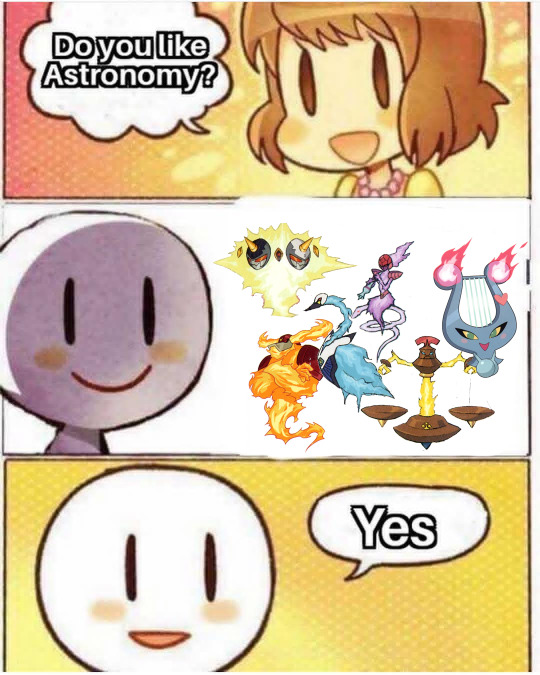
HAPPY 15th ANNIVERSARY MEGA MAN STAR FORCE!!! Apologies I haven’t been as active lately, been getting swamped with irl stuff but thank you all for still supporting this little blog! Star Force has been a huge influence and motivation for my life and I’m glad to be able to share this interest with other like-minded people! I don’t have another incorrect quote ready atm as the current ones in the queue are videos I havent even started to make so have a meme instead!
123 notes
·
View notes
Text
I'm Gonna Go Insane This Year, By The Way, Because December 14, 2021 Was The 15th Anniversary Of Mega Man Star Force And I Am Going To Make You Fuckers Play It

Reblog This Post Or I Will Beast Slap You
8 notes
·
View notes
Text

HERE’S WHAT YOU MISSED THIS WEEK (9.18-9.24.19):
NEW MUSIC:
· The All-American Rejects released a new music video for their song “Gen Why? (DGAF).” The song comes off of AAR’s latest EP Send Her to Heaven, which dropped earlier this summer.
· Punk band The Menzingers released a new video for their new song “Strangers Forever,” marking the end of summer. The song comes from the band’s next album Hello Exile, out on October 4th.
· Can’t Swim announced a new EP featuring the likes of Trash Talk’s Spencer Pollard, Taking Back Sunday’s Adam Lazzara, Frank Carter, Stray from the Path’s Drew Dijorio and more. The EP will be titled Foreign Language and is set to debut next month.
· Fall Out Boy lead vocalist, Patrick Stump, was featured on the new single “86 Missed Calls” by Japanese band MAN WITH A MISSION. The FOB vocalist previously helped write and produce the band’s 2017 track “Dead End in Tokyo.”
· Canadian singer Lights recruited Blink-182 drummer, Travis Barker, to collaborate on a new track titled “Long Live.” The song is an ode to the singer’s debut album, which was released a decade ago.
· Mayday Parade surprised fans with a 7” EP as a continuation of their latest album, Sunnyland, which dropped last year. The EP includes an acoustic version of “It’s Hard to Be Religious When Certain People Are Never Incinerated by Bolts of Lightning” and a B-side titled “Turn My Back.”
· Australian singer Alex Lahey recorded a cover of My Chemical Romance’s “Welcome to the Black Parade” for the radio station Triple J’s recurring Like a Version segment. The cover later received praise from the band’s frontman, Gerard Way, himself.
· Bayside announced a new album titled Interrobang, as well as a video for the album’s title track, last Friday. The full-length arrives after the band dropped the song “Prayers” following the release of an acoustic version of “Mona Lisa” back in January.
· Jimmy Eat World revealed the title of their next album, Surviving, as well as its first single “All the Way (Stay)”. Additionally, they announced a handful of tour dates in the U.S. and UK.
TOUR ANNOUNCEMENTS:
· Tonight Alive are scheduled to play their first show since 2018 at Australia’s Unify Gathering Festival on Saturday, January 11th, 2020. The band previously announced a string of U.S. tour dates for early 2019 before cancelling the tour and taking a hiatus from touring.
· Thrice announced a string of 15th anniversary tour dates in celebration of their fourth studio album, Vheissu. They will be joined by fellow rock acts mewithoutYou, Drug Church and Holy Fawn.
· Green Day, YUNGBLUD, Korn, System of a Down, the Offspring, Of Mice & Men, August Burns Red many others were announced to play next year’s Rock Am Ring and Rock Im Park festivals, both in Germany. The festival will take place on the first weekend of June.
· The Hella Mega Tour received major flack over the price and perks of its VIP packages. Some fans are not happy with the high price of a VIP ticket that doesn’t include a meet and greet with the bands.
· Blink-182 frontman Mark Hoppus addressed the band’s cancelled gigs in Columbus, Ohio, and El Paso, Texas, on Instagram. The band was forced to cancel their El Paso date after a nearby mass shooting the day prior, where Hoppus revealed they were locked down in their hotel.
· Simple Plan and Bowling for Soup announced a joint UK tour scheduled for the start of 2020. The Together Again! You’re Welcome Tour will feature Not Ur Girlfrenz as an opening act, and will mark the first time the bands have played together in the UK again in 16 years.
· In light of the Cars frontman Ric Ocasek’s passing earlier last week, the Killers covered “My Best Friend’s Girl” at a show in Bethlehem, Pennsylvania. Prior to this, the band’s singer Brandon Flowers posted a heartfelt tribute to the late musician on Twitter.
· Blink-182 played an intimate Spotify Encores gig in New York last Thursday, where they performed their most-streamed songs. The show took place at punk venue Saint Vitus in Brooklyn.
· Green Day took a stab at current U.S. president Donald Trump during their set at the iHeartRadio Music Festival. They changed the lyrics to their hit song “American Idiot,” swapping “I’m not a part of a redneck agenda” for “I’m not a part of a MAGA agenda.”
· Waterparks announced the supporting acts for the U.S. leg of their Fandom Tour, as well as some extra UK and European tour dates. Openers for their American tour include rapper Yung Pinch and rock band Kitten.
· Carousel Kings were revealed as the opening act for the upcoming co-headlining tour of McCafferty and guardin. Other bands joining them on the tour include thebreathingbackwards.
· For the rapper’s 37th birthday, Blink-182 gifted Lil Wayne a joint of marijuana onstage during their New York show last Friday. “I’ll take this now,” Wayne said right before he sparked it up with the help of Travis Barker and an off-stage hand.
OTHER NEWS:
· Angels and Airwaves and former Blink-182 frontman, Tom DeLonge, filed for divorce from his wife Jennifer after 18 years of marriage. After meeting in high school and raising two children, the couple is reportedly separating due to “irreconcilable differences.”
· Following this, DeLonge posted three videos through his organization, To the Stars Academy of Arts and Sciences, that potentially show UFOs. In response, the U.S. Navy confirmed the videos as “unidentified” phenomena in time for Storm Area 51 last Friday.
· In response to fan rumors, DeLonge also made a statement about his time with Blink-182 and squashed rumors that there is any bad blood between him and his former bandmates. To backtrack, Mark Hoppus recently spoke about Blink-182 before Matt Skiba replaced him following his departure in 2015.
· Former MCR frontman, Gerard Way, announced that he was already working on the fourth volume of his hit comic, The Umbrella Academy. The third volume, which was recently released in stores, is titled The Umbrella Academy Volume 3: Hotel Oblivion.
· Panic! at the Disco earned its third platinum single from their sixth studio album, Pray for the Wicked, for the song “Hey Look Ma, I Made It.” The track follows “Say Amen (Saturday Night)” going platinum in May and “High Hopes” going 3x platinum in June.
· Good Dye Young, the hair dye brand of Paramore frontwoman, Hayley Williams, relaunched its long out-of-stock lightening kit. In addition to doubling its size, the company revamped the formula to be vegan and gluten-free.
· Guitar manufacturer Fender announced a new nonprofit effort in collaboration with Panic! at the Disco’s Brendon Urie, Fall Out Boy’s Pete Wentz and more. The Fender Play Foundation moves forward with its mission to educate, equip and inspire young players.
___
Check in next Tuesday for more “Posi Talk with Sage Haley,” only at @sagehaleyofficial!
#posi talk#the all-american rejects#taking back sunday#fall out boy#blink-182#travis barker#mayday parade#alex lahey#my chemical romance#tonight alive#the umbrella academy#gerard way#panic! at the disco#green day#waterparks#yungblud#paramore#simple plan#of mice & men#bowling for soup#korn#system of a down#the offspring#august burns red#the cars#angels and airwaves#lights#area 51#storm area 51#thrice
124 notes
·
View notes
Video
vimeo
The Destroyer is Coming
https://ssd.jpl.nasa.gov/sbdb.cgi?sstr=apophis;old=0;orb=1;cov=0;log=0;cad=0#orb
Future History for you
Forthwith and straight away (eutheos) with (meta) the Tribulation (thlipsis - great affliction caused by applying pressure and pressing together leading to oppression and anguish) of those days the sun will be darkened (skotizo - obscured) and the moon will no longer provide light (pheggos) and celestial bodies (aster - asteroids, stars, or comets which can be seen radiating or reflecting light) shall fall (pipto - descend, being thrust down) from space (ouranos - the expanse of the sky, universe, or heavens) and the power (dunamis - energy, force, and influence) of the universe (ouranos) will be set in motion and be unsettled (saleuo)." (Mattinyahw / Matthew 24:29)
There is such an event looming on our horizon. And it is predicted to occur right on schedule. NASA scientists reveal that there is a 1 in 60 chance (some astronomers say a 1 in 38 chance according to the Washington Post) that quarter-mile wide (390 meter long) asteroid called 2004 MN4 (also named Apophis) will impact our planet on Friday, April 13, 2029 - about two and a half years into the Tribulation, toward the end of the Magog War. While current calculations show this stone missile missing the Earth by a scant 15,000 miles (less than a tenth of the distance to the moon) Yahowshah said that it would "be unsettled" sufficiently to impact our planet.
Interestingly, the reason the doomsday asteroid isn't well known is that its discovery coincided with the Christmas 2004 tsunami (another of the seven signs) that devastated South Asia. Apophis isn't large enough to completely destroy the earth - only an area the size of all of America's mid-Atlantic and Northeastern states. Its impact is estimated at being equivalent to 100,000 times the energy released in the nuclear blast over Hiroshima. The Washington Post claims: "2004 MN4 is a 'regional' hazard - big enough to flatten Texas or a couple of European countries with an impact equivalent to 10,000 megatons of dynamite - more than all the nuclear weapons in the world." The dust of its impact would envelope the entire planet, darkening the sun and eliminating the moon's light, consistent with the prophecy.
I'm not going to be dogmatic here, but what if the Revelation 8:8 mid-tribulation second trumpet prophecy predicting "something like a great (megas) mountain which was consumed in fire (kaio pyr - lit by being set on fire and burning [sure sounds like an asteroid]) was thrown (ballo - fell, allowing gravity to do its work) into the sea...." correlates to Yahowshahs mid-tribulation prediction in Matthew 24? Could the asteroid Apophis represent the literal stone which is going to be "set in motion and be unsettled" so as to descend from the heavens into the sea, spewing enough debris into the atmosphere to darken the sun? The smallest interaction with another piece of space debris would be sufficient to nudge Apophis' current orbit sufficiently to cause it to hit the earth rather than miss. And an asteroid of its size would generate sufficient heat to make it look like a fireball as it entered the earth's atmosphere, thus being "a great celestial body (aster - asteroid, star, or comet) shall fall (pipto - descend, being thrust down) from space (ouranos - the expanse of the sky, universe, or heavens) burning (kaio - set on fire and consumed) like a torch as it fell." (Revelation 8:9)
But beyond the timing and the description there is another fascinating Scriptural connection to Apophis. John tells us that the asteroid he is describing in revelation "has a name and it is called Apinthos (errantly replaced with "Wormwood" in English Bibles)." Apinthos (as it is rendered in the earliest Greek manuscripts versus Apsinthos in all reference dictionaries) and Apophis are remarkably similar names, one being of Egyptian origin and the other Greek. Apophis in Egyptian mythology is the name of "the evil spirit of destruction that will plunge the world into darkness." What a coincidence, that's exactly what John and Yahowshah said Apinthos will do.
The universal portrayal of the Greek name Apinthos as "Wormwood" is telling. In a small way it helps explain why Christians remain unaware of Yahowah's message and timeline. You will find "Wormwood" in the King James Version, the American Standard Version, the English Standard Version, the International Standard Version, the New Century Version, the New International Version, the New King James, the New American Standard, the New Revised Standard Version, and in Young's Literal Translation. This uniformity tells us that one of two things is true. Either apinthos is a word which requires translating and is not a name which must be transliterated, and also that apinthos is the Greek word for "wormwood" or all English Bibles are derivatives of the highly politicized, purposely corrupt, and grotesquely errant King James Version rather than being faithful translations of the inspired text.
Every lexicon readily admits, and the Scriptural text clearly confirms, that Apinthos is a name and not a word, so it should have been transliterated in every Bible and not translated in any one of them. John's testimony says: "The name (onoma) of the aster is called (lego) Apinthos (αψινθος)." (Revelation 8:11) That's as clear as words allow. The simple truth is, the name can't be translated because apinthos doesn't mean anything. It is of "uncertain derivation."
To add insult to injury, Revelation ends with this warning: "I testify to everyone who hears the words of the prophecy of this book: if anyone adds to them, God shall add to him the plagues which are written in this book. And if anyone takes away from the words of the book of this prophecy, God shall take away his part from the tree of life and from the set-apart and purified city which are written in this book." (Revelation 22:18-19) Yahowah doesn't like it when men copyedit His revelation and change His name and His words to their own.
The explanation, or should I say excuse, for this universal blunder is that the asteroid is said to make the waters pikraino which means: "to make them bitter and to embitter, to exasperate and irritate." The root of pikraino is pikros, and it means "to cause agony and suffering by being virulent - something that is marked by a rapid, severe, and malignant course and whose venoms or poisons overcome life's defensive mechanisms." From that, the KJV translators replaced αψινθος with "Wormword." Scholars now allege that is because this plant, known as the species Artemisia absinthium and named after the pagan deity Artemis, made water taste bitter. Then these same scholars justify their translation, or more accurately, their opinion, by saying that "the choice of Wormwood is universally supported by the early church." Sorry boys and girls. Every early Revelation manuscript renders the name of the asteroid "αψινθος," which is transliterated "Apinthos." There was no early "church" because the first followers of the Way didn't substitute the sungoddess' name for Yahowshah's descriptive term: ekklesia/out-calling. And, "Wormwood" is an English term. The transition from Anglo-Saxon to English occurred in the 15th century, and therefore it was hardly an "early church" affair.
Unable to resist the temptation of copy editing God, these same fellows plastered Wormwood all over the Old Covenant, too. The Hebrew word lanah, from an unused root meaning "to curse and to embitter" is cited metaphorically by Yahowah to demonstrate the consequence of turning away from Him to serve the foreign and false gods of the Gentiles. Such people's roots become rotten and Yahowah says that they will not be spared according to Moshe's testimony in Dabarym / Deuteronomy 29:18-20.
Apart from the similarities of name, timing, and description, I also find it interesting that the aster Apinthos is listed as the second of seven trumpet judgments in Revelation. The first describes the kind of nuclear winter that would follow an atomic war - something that the Magog conflict is predicted to devolve into. It speaks of "giant hail storms mingled with fire and blood," saying that "one third of the earth's land and a third of our planet's trees and grasslands will be burned up" in it. I find this telling because we should expect the Magog war to begin in 2027 and go nuclear in late 2028 putting the spring 2029 arrival of Apinthos/Apophis right on schedule.
Oddly enough by the Yowbel count the man in opposition to the Towrah will assume his world leadership role in late Oct 2026
Bringing it all together, one (3968-2968 BCE) is about God who is one creating a one on one relationship with the first man. Two (2968-1968 BCE) is the presentation of choice, choosing the Ark of the Covenant or the deluge brought on by the Devil’s delusion. Three (1968-968 BCE) is the story family, and so Abraham established what would become the family of God in the third millennia of man. Four (968 BCE-33 CE) completes the time of testing and the arrival of the greater light at the twilight of the fourth millennial epoch. Five (33-1033 CE) designates the time of the great serpent and consequently the era of religious confusion. Six (1033-2033 CE) is the time of man, the time that gave rise to Socialist Secular Humanism, and its replacement moral code—Political Correctness—where being judgmental has become a sin. This has led to injustice, immorality, irrational opinions, deceit, destruction, and death at an unparalleled scale. Seven (2033-3033 CE) is the shabat, the time man and God come together, our debts settled so that we can settle down with Him to form a perfect paradise.
0 notes
Text
PSP 15th Anniversary & Neo-Geo 30th Anniversary - Flashback Specials!


A couple months ago in March, the PSP hit its milestone 15th anniversary of its North American launch, just a few months after its end of 2004 debut launch in Japan. It came and went without much hubbub in the gaming media however due to that hitting around the same time the COVID-19 outbreak started to make waves in America and that pandemic rightfully getting the bulk of the press attention. Writing about game platform anniversaries over the past several weeks has been helping me get through these wild times we are now in by reflecting on my memories of these platforms, so with that said, please join me in looking back at Sony’s debut handheld….and later on in this very same flashback special I will have a bonus addendum with my memories of the Neo-Geo since it recently celebrated its 30th anniversary.

I remember when the PSP was surprisingly announced at Sony’s 2003 E3 press conference. I was there in Los Angeles covering my first E3 that year! The website I wrote for at the time, the long defunct vgpub.com, was a smaller gaming press outlet and only had one invite to the Sony press conference so our website founder, John attended the Sony conference while I and another staff writer slept in! I will never forget when John got back shortly after it ended and my colleague and I asked him if there were any big surprises (still a year or two away at this point with conferences being live streamed and with MySpace being the only major social media in 2003, there was a lack of live minute-by-minute news reporting and you would have to wait at least a couple hours until after the conferences ended to check gaming websites for news updates). John replied with an ‘oh yeah’ and proceed to hand us a little PR packet with a press release announcing the Playstation Portable (PSP) and how it would have near identical tech to the PS2 and be able to play movies with its UMD-discs.
By mid-2003 the PS2 was a juggernaut around the globe and took up a little over half the market share in the home console gaming market against the Xbox and GameCube. With the PSP offering a big upgrade to the then-current GameBoy Advance out on the market and having near PS2 quality graphic capabilities, and with DVD movies being a huge factor into PS2 sales, it only seemed logical the PSP would be a sure-winner in the handheld gaming market. All three of us were buzzing about the news and how the PSP would be huge for handheld gaming and how Sony likely would take over. That did not quite happen however due to the surprise success of the Nintendo DS, but that did not stop the PSP to go on and be a viable gaming handheld alternative and have a fair amount of global success. I recall being incredibly stoked for the PSP launch, with a lot of hype going into its 20-plus launch game lineup.
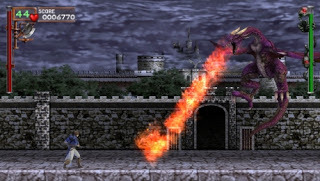
I particularly remember being excited for Lumines, a new puzzler from Bandai that put a new twist on Tetris-style dropbox puzzle gameplay. It achieved this by making combo-clearing squares, instead of lines, and having a mesmerizing evolving soundtrack and graphic scheme whenever certain score targets were hit. Amazingly, the gameplay ranked right up there as top-in-class puzzler gameplay with Tetris. Combine that with its dazzling visuals and phenomenal soundtrack and it resulted in Lumines being the surprise killer-app of the PSP launch. Earlier this week I popped in Lumines Remastered on the PS4, and the gameplay is still as addicting as ever, and my anticipated quick five minute round for a refresher resulted in nearly playing an hour nonstop!
From the other launch games I remember getting Untold Legends, Twisted Metal: Head-On and Tony Hawk’s Underground 2: Remix. Head-On was an all-new Twisted Metal game that was a good handheld version that also offered up online play, which was among one of the first of all handheld games to do so. I was a big fan of the hack ‘n slash action-RPGs on consoles during that era like Dark Alliance and Champions, and Untold Legends was a fun portable take on that which also offered up local wireless multiplayer. My friend, podcast co-host and also fellow VGpub staff writer Chris, along with my brother Joe, met up for a few memorable multiplayer sessions of Untold Legends.
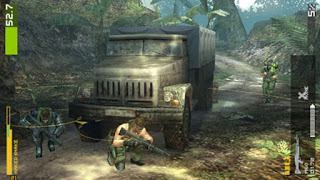
All three of us played a whole heck of a lot of PSP in its initial weeks. At this time in early 2005, downloadable audio shows were kind of catching on but it was still a few months before Apple officially dubbed them as ‘podcasts’ on iTunes. I brought up the idea to Joe and Chris to get together to record an audio show for VGpub all about the PSP launch and our initial thoughts on the games available. We had no idea how to set it up on the technical side, so we winged it and Chris brought over one of those old-school stationary, coffee table tape recorders that are kind of stereotypical in psychiatrist or detective interview scenes in movies. We hooked an auxiliary cable from it to my PC and somehow produced a digital tin-can-and-string version of what would be the pilot of VGpub’s podcast. We sent the pilot to the VGpub editors to see what they thought, but we were dismayed when hearing back they thought it was too long at around 50 minutes in length.
Bummed with that reception, we wound up not posting the PSP pilot show, but eventually gave podcasting another go when that scene took off several months later after it caught on with iTunes. We had a fun seven year run on the podcast, and when VGpub sunsetted a couple years after we started, we continued with the podcast on its own site for a few more years and as part of the launch posted the long lost pilot episode. And now in honor of the PSP’s 15th anniversary, I dug out that amazingly awful audio quality pilot from my hard drive archives and uploaded it to YouTube so now you all could relive our initial highs over the PSP’s launch. You can check it out by click or pressing here, or by checking out the embed below!
youtube
Behold our low-tech, amateur endeavor of the very first podcast I participated in that focused on the launch of the PSP.
THUG 2: Remix was a nice port of the console version of that Tony Hawk game I played a lot of. It was shortly after playing this is when I realized I did not want to play PS2 ports on the PSP. While a lot of them packed in a lot of the same content as their PS2 counterparts, they suffered noticeably due to the PSP having one analog ‘nub,’ only one pair of shoulder buttons and having to dial back the graphics and/or features in order to get it running on the comparably lower-powered PSP. I realized this moreso over the next year picking up and trying out PSP versions of BurnOut, Virtua Tennis and Gun. Once again, nothing against the PSP versions since a lot of them played and looked fine on the PSP, and if I primarily was on the road or travelling I would have been thrilled with these versions. It was over this next year I realized I would rather play these PSP ports on the PS2 instead of dealing with those compromises.
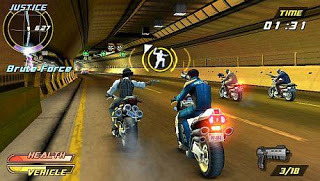
Unfortunately in the early years of the PSP, it was dominated by PS2 ports and five star original titles like Lumines were few and far between. This culminated with barely getting any play out of the system and selling off my PSP a little over a year later in mid-2006. Things were looking dire for a little while for the PSP, but Sony and strong third party support from companies like Square-Enix, EA and Capcom continued to pump out games and eventually the PSP established a strong portfolio of original releases. Some of the original efforts from Sony were so strong that games like Twisted Metal: Head On, Syphon Filter and Motorstorm: Arctic Edge got remastered ports on the PS2 to keep up first party releases for the PS2 in its twilight years. I want to make sure to give a shoutout to other strong original PSP titles such as the Patapon series, WTF: Work Time Fun, both Phantasy Star Portable entries, all four SOCOM titles, Resistance: Retribution, both Pursuit Force games, Killzone: Liberation, Kingdom Hearts: Birth by Sleep, Final Fantasy: Crisis Core, both God of War titles, Mega Man: Powered Up and Metal Gear Solid: Peace Walker.
In 2012, I acquire PSP’s successor from Sony, the Vita. It featured digital backwards compatibility with a fair amount of the PSP’s library. I wound up acquiring about a dozen of the PSP games I always wanted to try this way that I missed out on after selling it. The Vita was also compatible with most of the PSone classics that were available on the PS3. This lead to me playing a lot of Final Fantasy VII a couple years ago in anticipation for the recently released and long coming FFVII Remake. This past week a fired up a few of them for a refresher on some of the PSP titles in preparation for this article. I had a lot of fun with the original Pursuit Force….at least the first couple missions anyways since that game had compatibility issues and frequently froze on the Vita.
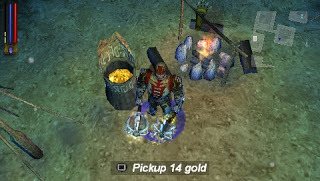
I dusted off my Castlevania skills in my attempts at playing the remake of Rondo of Blood that is part of Castlevania: The Dracula X Chronicles. It has a challenging but fair degree of difficulty in the few levels I progressed through. Metal Gear Solid: Portable Ops I dug a lot for its first couple bite sized missions that focused on the origins of Snake meeting Campbell. Metal Gear Solid: Peace Walker I consider to be the true, fully featured fifth installment of the series since it essentially has a full length story and slate of missions available. I did not play it on the PSP, but instead on the HD remaster collection that released a year later on the PS3 and loved grinding through its wide variety of missions that set the stage for The Phantom Pain. While it is not compatible with the PSP’s physical discs, the Vita is a good alternative to experience most of the PSP’s library through digital download for those still curious about the PSP’s games.
On the UMD movie side of things, launch PSPs came bundled with a copy of Spider-Man 2 which I eventually watched on a plane trip. The quality of the UMD movies were undeniably good. Later on, I got sent a UMD to review of the fun underdog sports film, Dodgeball and those wound up being the only two UMDs I owned. For the first year or two of the PSP lifespan I remember game stores being flooded with physical UMDs, but a lot of them cost nearly as much as their DVD versions at the time and I am speculating that people anticipated they would only cost half or a third as much as DVDs kind of relative to how the portable-to-console game pricing goes, and when that proved not to be the case it lead to a quick exit for UMD movies on the PSP.
I look back at the PSP and will fondly remember those awesome early months I had with it, and how it later redeemed itself by having a fleshed out lineup of original games. I want to also give the PSP props for becoming the only platform that easily surpassed portable efforts from other companies that tried to compete against Nintendo in the handheld gaming market like Atari, Tiger, Sega and SNK. I adhere caution when tracking down used PSPs due to reports of some PSPs being susceptible of having bulging battery packs over time. Sony released a few different revisions of the PSP, so I do not know if that is related to only the launch version, or for all versions of the PSP. This is why I recommend tracking down a Vita instead to get your PSP fix for those interested.
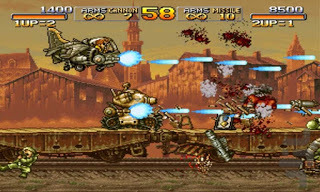
In the bonus addendum to this PSP anniversary flashback, I will touch on my brief memories with SNK’s Neo-Geo to commemorate its recent 30th anniversary of the original launch of the Japan arcade hardware. The arcade side of the Neo-Geo was dubbed the Multi-Video System (MVS) and it debuted in Japan in April of 1990, and following in American arcades a few months later in August. For those not in the know, the 24-bit arcade hardware had a home console version called the Neo-Geo Advanced Entertainment System (AES) that launched in Japan later on in 1990 and in 1991 in America. The unique thing about the Neo-Geo is both the MVS and AES used the exact same technology so it was possible to have 100% faithful home ports. SNK wanted the home experience to as close as possible to the arcade that it bundled the system with two mammoth arcade sticks.
I first remember seeing Neo-Geo games in MVS format at various arcades in the early to mid-90s. The MVS cabinet was unmistakable with it having the eye-grabbing Target-red color and the two-to-four mini-game marquees listed at the top of it. The big draw to arcade operators at time of the Neo-Geo MVS was that the games came on friendlier priced cartridges that could easily be swapped out like games in a console instead of ordering whole new arcade machines to replace them. I have seen the four-slot MVS plenty of times, but I mostly remember seeing the two-slot version more frequently in arcades over the years, and for the most part it was the same two games featured on them: Puzzle Bobble (AKA Bust-a-Move) and Metal Slug. These were the two game I primarily encountered on the MVS in my childhood arcade experiences. I was not all that great at Puzzle Bubble with its unique spin on puzzle games by shooting bubbles onto the playfield from the bottom of the screen. I did however love Metal Slug and its sequel that I also recall seeing originally on the MVS. Metal Slug was arcade bliss at the time, with charming cartoony soldiers oozing with detail and twee animations as they run ‘n gunned with an arsenal of over-the-top weaponry, villains and larger than life boss battles. Metal Slug is one of the few games where slowdown is a good thing in my opinion because it primarily happened when encountering daunting bosses and explosions that filled up the screen and it felt like the machine was doing all it could to keep the action moving.
youtube
Jason and John from the MetalJesus crew do a fine job here giving a 101 lesson on the Neo Geo hardware and have lots of footage here of some of the best games to hit Neo-Geo.
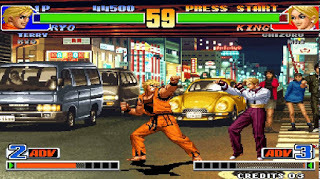
A few weeks ago I did a quick playthrough of Metal Slug X on Xbox One since it was on Game Pass, and everything that I fondly associated with those run ‘n gunners was still there, even the slowdown! Thankfully the AES and MVS games did not remain trapped on their original expensive hardware. By the mid-2000s, SNK regularly started to output various collections of games both digitally and physically. I highly recommend Metal Slug Anthology that hit PS2 and Wii, and later got digitally ported onto the PS4. A majority of the individual Neo-Geo games got ported over individually in recent years on PS4, Xbox One and Switch. Since all these marketplaces frequently run sales on their back catalog, you can now find a lot of these games well under their default price of $7.99 each. Over the last few years I checked out plenty of original Neo-Geo games this way. I tried out too many fighting games to count by doing this, but also finally got a chance to play SNK’s arcade sports offerings that got overlooked by their many fighting games. Three Count Bout is a graphically impressive wrestling title, but its button-mashing leniency takes a toll on thumbs. I loved Dunk Dream/Street Hoop, which is SNK’s take on NBA Jam, but with a hip-hop makeover and catchy rap-filled soundtrack. Neo-Geo Turf Masters is a fast-paced, fun golf title and until recently I had no idea that the Super Volleyball game I loved so much on Genesis had a beefed up version and a sequel featuring amped up robots and robotic attacks on the Neo-Geo.
The Neo-Geo is renowned for its acclaimed catalog of fighting games with several entries each in hit series like Samurai Shodown, Fatal Fury, World Heroes, Art of Fighting and its flagship fighter, The King of Fighters which saw annual entries on the platform for 10 years from 1994-2003. Of all these, the ones I frequented the most of were various re-releases were King of Fighters ‘97 and ’98. Its team based fighting style made it standout from the other fighting games, and it was only in recent years with some longer sessions with KoF ’98 that I finally started to come around on it. One of these days I want to give an honest effort at getting into Samurai Shodown. I remember the gaming mags were hyping up its debut entry at the time as a major breakthrough to fighting games with its gruesome swordplay it brought to the table. I eventually picked up its anthology disc on PS2 and dabbled with a couple entries, but never too seriously and need to correct that sooner than later. A random memory is attempting to play Samurai Shodown II at Arcade Infinity in Koreatown one evening in the afterhours of covering E3 in 2003. Shortly after starting it up, someone sat down and challenged me and proceeded to properly dominate me. Looking back, that may have something to do with why I never gave it that much of a shot.
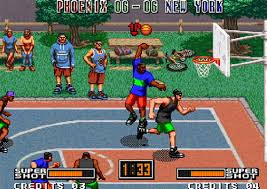
I never had a chance to play the AES home system until well after its lifespan in the early 2010s at regional retro game conventions. That was because I did not see one in the wild until then. Unfortunately in 1990, the home console market was dominated by the NES while the Genesis was only a year old and just starting to break in, so while the MVS was a bargain for arcade operators, the AES arcade perfect tech was way ahead of the times and cost exponentially more compared to the NES and Genesis at the time. Reading copies of Game Players and Electronic Gaming Monthly back then I associated Neo-Geo AES games as being the games that literally cost $200-300 individually in the back of the magazine ads for mail service game catalogs. Occasionally there would be SNES/Genesis ports of the popular games like the original Fatal Fury and Samurai Shodown, but obviously there quality was dialed back to run on the weaker machines and that was realistically all of what was available to a majority of the home console market until those anthology collections started to get released in the mid-2000s.
I never owned an AES, but I was stunned by its lasting power with official games being released for it all the way until 2004. I only a saw a Neo-Geo AES for sale once at my local retro game shop all these years back around 2008 and I want to say it was going for about $200, and part of me wanted to get it for the standout collector’s item it would be, but another side of me knew the games went for insane amounts by that point and the games were already by then starting to get re-released on other consoles in more wallet-friendly anthology discs. If you have yet to dip into the Neo-Geo catalog, I would highly recommend either grabbing the digital copy of Metal Slug Anthology on PS4 for some awesome two player run ‘n gun couch co-op with a friend as the perfect way to start off. Otherwise, type in ‘ACA’ in the Xbox One/PS4/Switch digital marketplaces to see most of the Neo-Geo games released digitally under the ACA banner. While it was damn near impossible to afford to play the AES games at home during their initial release, I will close by giving major props to SNK for keeping their back catalog of Neo-Geo titles alive for current generations to discover on current platforms at consumer friendly prices!
Thanks again for sticking with me in reliving my memories of the PSP and Neo-Geo with this two-for-one flashback anniversary special! Want more retro-game goodness? Then take a peek at my other flashback specials below!

My Other Gaming Flashbacks
Dreamcast 20th Anniversary
GameBoy 30th Anniversary
Genesis 30th Anniversary
PSone 25th Anniversary
Saturn and Virtual Boy 25th Anniversaries
TurboGrafX-16 30th Anniversary and 32-X 25th Anniversary
0 notes
Text
Kamen Rider 45th Anniversary File: Den-O WAZA! Part 1


2007:
Power Rangers Operation Overdrive airs on ABC related networks as the 6th entry of the Disney Era of Power Rangers. The Power Rangers franchise reached its 15th year and we saw the brief return of veteran rangers such as Adam Park in a 2-part crossover!
PORK CUBE STEW! The 31st entry of Super Sentai, Juken Sentai Gekiranger, airs alongside Den-O. The show is styled to motif kung-fu styles with an animal theme. An example of the kung-fu motif aside from combat is that the names of some of the masters the Gekirangers are trained by are parodies of actual kung-fu movie stars (Ex. Sharkie Chan, Bat Li etc.)
Ultraseven X, a dark revival of Ultraseven, airs on Japanese cable TV.
Ultra Galaxy Mega Monster Battle, a continuation of the Ultra Series set 500,000 years after Mebius, premieres on TV.
GoGo Sentai Boukenger vs. Super Sentai is released on DVD. This film acts as a 30th anniversary crossover of past Rangers and introduces us to the living embodiment of the Red Warriors, AkaRed.
Let’s fight if you wanna be a soldier! ~ Kamen Rider: The Next, a sequel to the reboot movie Kamen Rider: The First, premieres in theaters.

“The Train of Time, DenLiner...will its next stop be The Past... or the Future?”
2017 is Kamen Rider Den-O’s 10th anniversary.
Den-O is a bit hard to talk about...because it is massive. This is, by far, the most commercially successful entry in the series ever. Seven movies featuring the cast, anime spinoffs, crossovers, multiple cameos and guest starring roles of the cast members in other films, and toys...lots and lots of toys.
Kamen Rider was always as part of its core, a sci-fi based TV series and one of the younger long runners of the genre. So given that, Time Travel has popped up as a plot every now and then. But now, this trope was going to be front and center as one of the story’s main elements.
It is an odd coincidence they chose now to do this, as a certain British show made its return 2 years ago and was taking the world by storm. Another is the choice of a train as the time vehicle that didn’t need 1.21 GW. Kamen Riders ride motorcycles or in rare cases sports cars, so a Train seemed like left field thinking, but it was propelled by a motorcycle. Because when you think of breaking the space-time continuum and controlling it at will, you apparently need a Honda. We can assume in this world that if Honda can make robots that can climb stairs and play soccer, they can make train pushing timebikes powered by chroniton-flux-inverse neutron technobabbly whatchamawhozits.
But, Japan loves trains as it is an integral part of their public transportation system and it is fast and reliable transport thanks to the bullet trains. Trains also capture the imaginations of young boys, which means there is money to be made for toymakers like Bandai.
Now after a few seasons full of dark subjects like suicide, people being eaten, betrayal and such, the Powers that Be decided to lighten the mood a bit and have a slightly more comedic series. Toei producers chose Yasuko Kobayashi to be the head writer for this series (whom Toonami anime fans might recognize later on as the head writer for the Attack on Titan anime).
Den-O is a love or hate series depending on your tolerance for moments of nonsense and slapstick and having characters who in some fans minds have long overstayed their welcome. The TV series itself and the first few films are fine and even fun, its when the Toei staff decided to drag it out that things got tiresome to some.
The basis of this series, outside of the concept of time travel, is how humans perceive time itself: How we cherish it and how what we do can impact it no matter how great or small. Some of the victims of the villains, The Imagin, all have regrets about time: “What if I did something different back then?”, “How can I move on from that?, “How can I face the future knowing this is going to happen and there is nothing I can do to change it?”.
At one point, the universe of Kamen Rider is said to have a concept, part of how Time works is how humans perceive it, events that happen are remembered and stay in people’s minds and that becomes the reality. There is a bit of truth to this, some of the actions we make have consequences, some bigger than others. But also, the connections we make in the time we have and how we interact with others can shape the world. Still, the concept also sort-of does not work as Time is wibbly wobbly stuff and would exist with or without humans as a fundamental force of all creation that is absolute.
The passengers of time
The star lead, Takeru Satoh, made the show work as unlike his predecessors, Takeru portrayed a more average hero. Rather than be a chiseled shrine to masculinity or a man who is naturally gifted at being a warrior after a few fights. Ryotaro Nogami...is us if we were given the power of the belt.
He is clumsy, when he sees a monster for the first time, he freaks out and faints, he stumbles during fights and flails around his weapon. But then he grows as a person and becomes the hero we want him to be. Just as we do in life, we grow into something better if we strive for it. In essence, Ryotaro is one of the most human Kamen Riders in the series as he isn’t perfect, but his heart is in the right place. Another factor of Takeru Satoh was his comedic timing and ability he had to play a character who had more than one character in his body at times.
Praise should also go to main suit actor Seiji Takaiwa, as this was one of his most difficult roles. He had to pretend to be anywhere from 2 to 6 characters sharing the exact same body on top of being another character and every form of Den-O. It was grueling on him as he had to move his limbs in different directions or posture in different ways or even act like he had voices in his head and try to remember who acted what way. As seen in a stage show interview, it could drain him to the point of exhaustion.
Some actors were from previous Kamen Rider shows, such as Rina Akiyama from Agito and Yuichi Nakamura from Hibiki.
Given the extension this series has gone through, it is only fair to show the other players in the story so newcomers don’t get lost before going onto the Riders. (Yes, plural but we’ll get to that later.)
The DenLiner Crew (lovingly named Team DenLiner by fans)

Owner
Owner is the..Owner of the DenLiner, a mysterious figure who holds authority on his train and is very eccentric. Often he speaks in riddles about time and only lets on those who have a ticket or a Rider Pass on his train. He, like the main hero, is a Singularity Point, a being who can exist outside of time and be unaffected by Imagin. He also does not like fighting on his train and will throw anyone off for doing so.

Naomi
Naomi is the stewardess of the DenLiner's dining car, which the gang frequents regularly. She is a sweet and bubbly young woman who serves coffee to the passengers of the train, though her coffee is terrible and only Imagin seem to like its taste. She does get moments to shine and help out when the chips are down, but even when she doesn’t take part of the action, she seems perfectly content taking orders for hungry passengers and meeting new faces like other Kamen Riders.

Hana
Warning: Spoilers!
Hana is Ryotaro’s niece from the future (though she doesn’t know this). She, like her uncle, is a Singularity Point. As a young woman, she time traveled to 2007 and bestowed her uncle a Rider Pass to become Den-O in order to protect and restore the future that the Imagin had destroyed.
Due to her future being rewritten/restored at a certain point in the show, she de-ages to a 10 year old, presumably because the restored time had a ripple effect and changed the year she would be born.
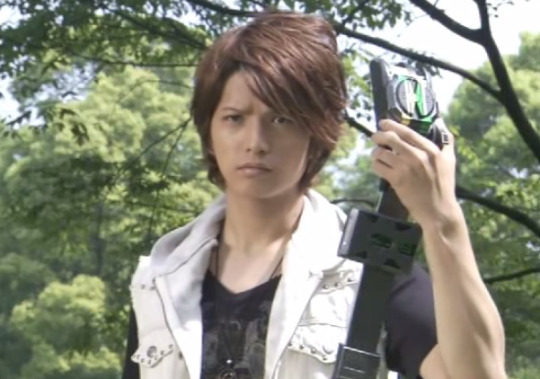

Yuto Sakurai/Kamen Rider Zeronos Altair Form
Yuto Sakurai is the fiance of Ryotaro’s sister Airi and Hana’s future father. Yuto is a bit headstrong, but he means well.
There are actually two of them during the TV show, one from the past and one from the future. The Zeronos System is one that involves personal sacrifice, as each time a Zeronos card is used, Yuto erases his own time or rather the memories made from his existence. He later gets red cards that use his own memories to become Zero Form, which along with the green/yelow cards eventually erases his future self.
The cards unlike many trinkets are expendable as they fade away after a certain period of use. Eventually, nobody outside of a Singularity Point remembers him and he loses the love of his life (but he hopes to return to her someday.). He defends time along with Den-O despite the risks along with his Imagin...
Deneb


Deneb is an Imagin who rebelled against his kind and decided to help Yuto fight by forming a contract with him. He is something of a butler to Yuto and takes care of him, but this often leads to embarrassing moments for Yuto. He is very polite and friendly but can be serious in battle, merging with Yuto to become Zeronos Vega form or the Denbick Buster cannon in Zero form.
Kotaro Nogami/New Den-O

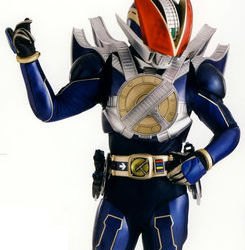
Kotaro is another Rider from the Nogami family from the distant future. He is Ryotaro’s Grandson. When first meeting his grandfather in the past, he has a bit of a chip on his shoulder. This is due to the fact he named him and by his time period, Kotaro is a country bumpkin name and he has inherited his grandfather’s infamous bad luck. He eventually learns to respect his grandpa and takes over his role as Den-O when Ryotaro decides to step down.
Up Next...the Taros, the Hero and the villains!
The Climax is only getting started!
36 notes
·
View notes
Text
Anniversaries of the great videogames titles of 2017
30th Anniversary
After Burner – First released for arcades on July 17, 1987
Digital Devil Story: Megami Tensei – First released for NES on September 11, 1987
Double Dragon – First released in arcades in 1987
Final Fantasy – First released for NES on December 18, 1987
Mega Man – First released for NES on December 17, 1987
Metal Gear – First released for MSX2 on July 13, 1987
Phantasy Star – First released for Sega Master System on December 20, 1987
PC Engine – First released on October 30, 1987
R-Type – First released for arcades on July 1, 1987
Street Fighter – First released for arcades on August 30, 1987
Ys I: Ancient Ys Vanished – First released for NEC PC-8801 on June 21, 1987
25th Anniversary
Alone in the Dark– First released for PC in 1992
Kirby’s Dream Land – First released for Game Boy on April 27, 1992
Lunar: The Silver Star – First released for Sega CD on June 26, 1992
Otogirisou – First released for SNES on March 7, 1992
Shining Force – First released for Sega Mega Drive on March 20, 1992
Shin Megami Tensei – First released for SNES on October 30, 1992
20th Anniversary
Atelier Marie: The Alchemist of Salburg – First released for PlayStation on May 23, 1997
Armored Core – First released for PlayStation on July 10, 1997
Bushido Blade – First released for PlayStation on March 14, 1997
Einhander – First released for PlayStation on November 20, 1997
Fallout – First released for PC on September 30, 1997
Final Fantasy VII – First released for PlayStation on January 31, 1997
Final Fantasy Tactics – First released for PlayStation on June 20, 1997
Gran Turismo – First released for PlayStation on December 23, 1997
Grandia – First released for Sega Saturn on December 18, 1997
GoldenEye 007 – First released for Nintendo 64 on August 25, 1997
Mega Man Legends – First released for PlayStation on December 18, 1997
Kowloon’s Gate – First released for PlayStation on February 28, 1997
SaGa Frontier – First released for PlayStation on July 11, 1997
Sangoku Musou – First released for PlayStation on February 28, 1997
Star Fox 64 – First released for Nintendo 64 on April 27, 1997
Tobal 2 – First released for PlayStation on April 25, 1997
15th Anniversary
Disaster Report – First released for PlayStation 2 on April 25, 2002
Final Fantasy XI – First released for PlayStation 2 on May 16, 2002
Higurashi When They Cry – First released for PC on August 10, 2002
Kingdom Hearts – First released for PlayStation 2 on March 28, 2002
Mega Man Zero – First released for Game Boy Advance on April 26, 2002
Xenosaga Episode I – First released for PlayStation 2 on February 28, 2002
10th Anniversary
Assassin’s Creed – First released for PlayStation 3 and Xbox 360 on November 13, 2007
Chocobo Dungeon – First released for Wii on December 13, 2007
Dynasty Warriors: Gundam – First released for PlayStation 3, Xbox 360, and PlayStation 2 on March 1, 2007
Etrian Odyssey – First released for DS on January 18, 2007
Odin’s Sphere – First released for PlayStation 2 on May 17, 2007
Opoona – First released for Wii on November 1, 2007
Super Mario Galaxy – First released for Wii on November 1, 2007
Uncharted: Drake’S Fortune – First released for PlayStation 3 on November 19, 2007
Umineko When They Cry – First released for PC on August 17, 2007
Wii Fit – First released for Wii on December 1, 2007
The World Ends with You – First released for DS on July 26, 2007
5th Anniversary
Binary Domain – First released for PlayStation 3 and Xbox 360 on February 16, 2012
Bravely Default – First released for 3DS on October 11, 2012
Dishonored – First released for PlayStation 3, Xbox 360, and PC on October 9, 2012
Dragon’s Dogma – First released for PlayStation 3 and Xbox 30 on May 22, 2012
Fez – First released for Xbox 360 on April 13, 2012
Gravity Rush – First released for PS Vita on February 9, 2012
Senran Kagura – First released for 3DS on August 30, 2012
Skullgirls – First released for PlayStation 3 on April 10, 2012
Wii U – First released on November 18, 2012
2nd Anniversary (Bonus)
Undertale – First released for PC on September 15, 2015
#videogames#2017 anniversaries#30th anniversary#25th anniversary#20th anniversary#15th anniversary#10th anniversary#5th anniversary#2nd anniversary
0 notes